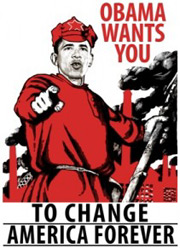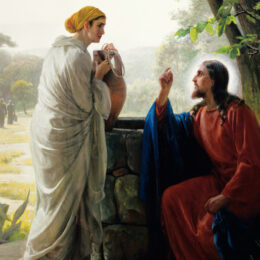 by Ralph R. Reiland –
by Ralph R. Reiland –
Pushing his agenda for higher taxes on “the rich,” President Obama kicked off his December 6 speech in Kansas by saying his Kansas grandparents “shared the optimism of a nation that triumphed over the Great Depression.”
In fact, the 1929 stock market crash turned into the long-running Great Depression because the counterproductive soak-the-rich policies of the federal government hadn’t “triumphed” in reversing the downturn.
Franklin Roosevelt’s forceful expansion of federal regulations and confiscatory taxation, his intimidation of “the rich,” encouragement of labor strikes, and half-baked policy experiments discouraged employers from hiring workers and provided strong disincentives to new business investment.
“From 1929 to 1940, from Hoover to Roosevelt, government intervention helped make the Depression Great,” writes Amity Shlaes in The Forgotten Man: A New History of the Great Depression. “The trouble, however, was not merely the new policies that were implemented but also the threat of additional, unknown, policies. Fear froze the economy, but that uncertainty itself might have a cost was something the young experimenters simply did not consider.”
Roosevelt’s goal was to enlarge the power of the public sector, increase revenues to the government, and expand the economic controls of the centralized bureaucracy, even for dubious projects (today’s version of unending and equally dubious projects include federal handouts for the Chevy Volt, $500 million in loan guarantees to politically correct but economically bankrupt Solyndra, Cash for Clunkers, and federally-imposed mortgage goals that promoted zero-down loans to unqualified buyers).
“Businessmen and businesses were the targets,” writes Shales, while Roosevelt “made groups where only individual citizens or isolated cranks had stood before, ministered to those groups, and was rewarded with votes.”
The craving for political power took precedence over national unity. “Roosevelt and his staff were becoming habitual bullies, pitting Americans against one another,” writes Shlaes.
As Roosevelt stated it in his second inaugural address, he sought “unimagined power.”
Those two words alone were enough to turn employers and investors into John Galt, the fictional character in Ayn Rand’s novel Atlas Shrugged who, refusing to become a cog in an anti-individualist society, urges the world’s producers, including businessmen, to strike, to withdraw their talent and investments from society in order to bring about the collapse of collectivism.
In their 2010 book, Return to Prosperity: How America Can Regain Its Superpower Status, Stephen Moore and Arthur B. Laffer summarize the Roosevelt legislative victories that deepened and lengthened the Great Depression.
Draining investment capital from the system, the top income tax rate was raised from 25 percent to 63 percent in 1932, and then to 79 percent, creating clear disincentives for business expansion and ever-higher obstacles to capital accumulation and new investment.
The corporate tax rate was raised from 11 percent to 12 percent in 1931, 13.75 percent in 1932, and 15 percent in 1936 with a 27 percent surtax on undistributed profits.
The highest inheritance tax rate was more than doubled in 1932, from 20 percent to 45 percent, raised to 60 percent in 1934 and 70 percent in 1935. In 1932, a gift tax was reinstated with a top rate of 33.5 percent, raised to 45 percent in 1934 and 52.5 percent in 1935.
The result was enduring stagnation. “The DOW did not return to 1929 levels until nearly a decade after Roosevelt’s death,” writes Shlaes, while the unemployment rate “did not return to pre-crash levels until the war.”
After summarizing the aforementioned triumphs of Roosevelt’s anti-rich, anti-business policy agenda, Moore and Laffer issue a clear warning: “U.S. federal and state tax policies are on an economic crash trajectory today, just as they were in the 1930s.”



